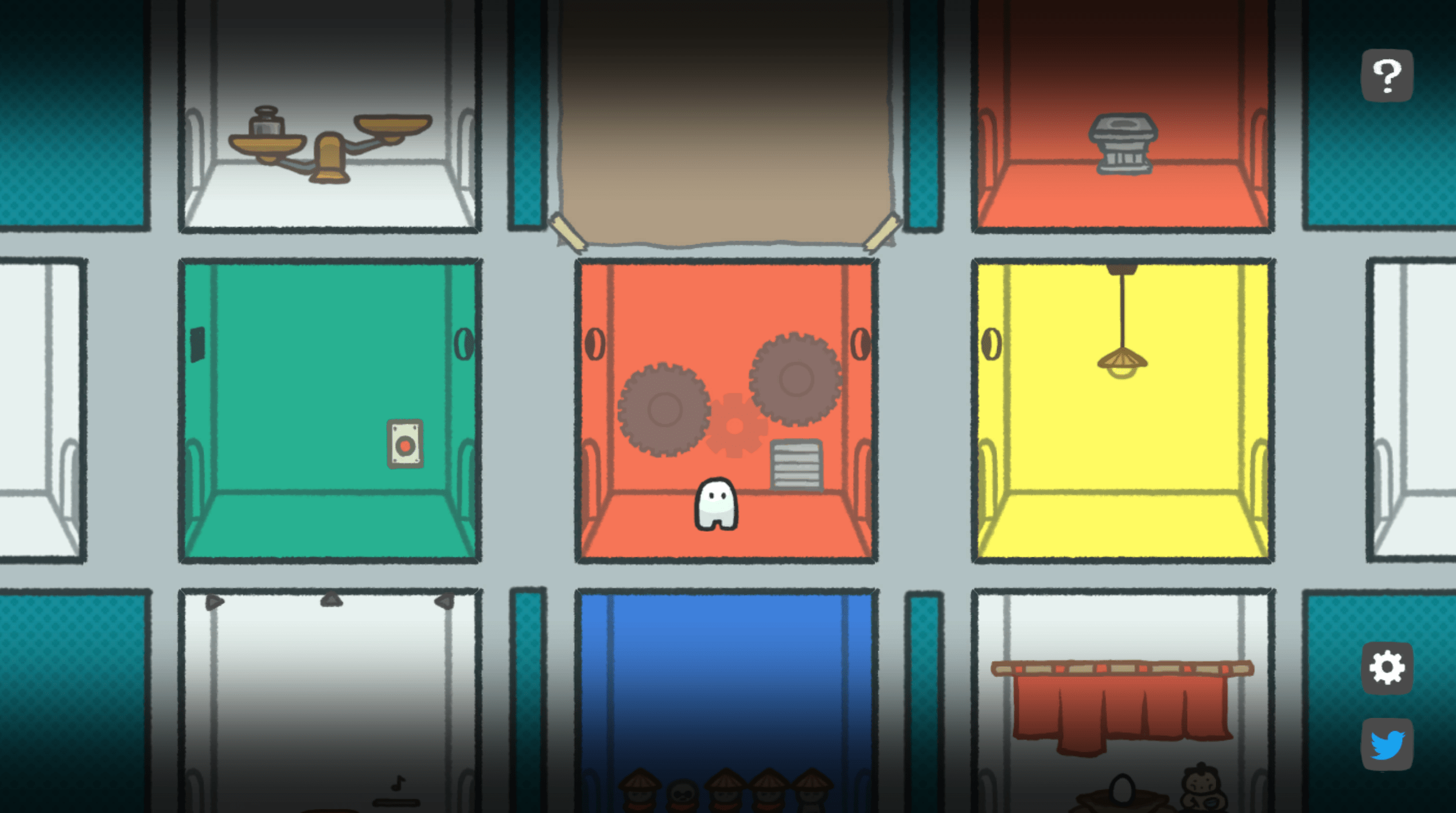For my puzzle game, I played Neko Donut’s ROOOM. Immediately, the simple graphics with the primary-colored rooms, my cute little character, and quirky graphics like this (below) made the game feel very endearing.
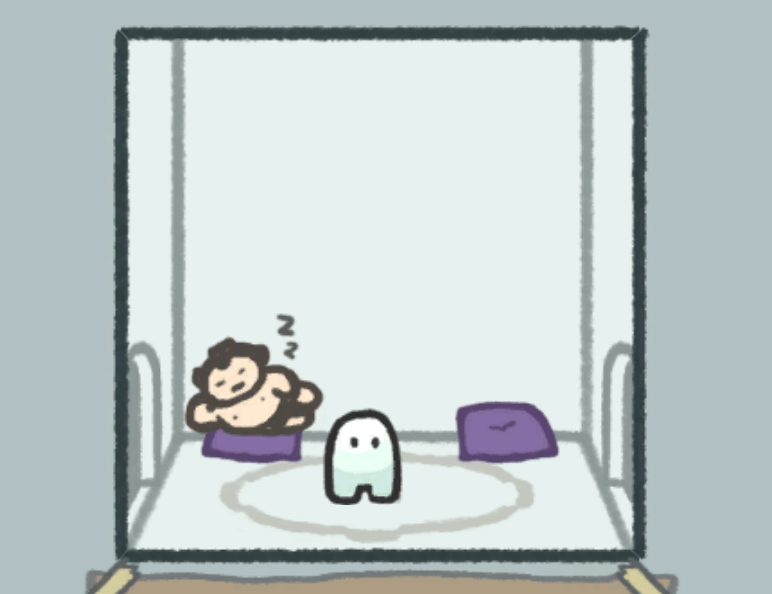
I actually couldn’t translate the instructions because they were in Japanese and Google Translate didn’t let me select the instructions as text, but I ended up being able to figure out the game quickly anyway.
Formal Elements
Players & Roles:
- Single-player game. You are represented as a little white blob figure and can move the figure using arrow keys and the space bar for actions.
Outcome & Objective:
- The objective is to escape this weird building! Intuitive entrance-on-left, locked exit-on-right layout, with 3 columns of rooms in between.
- You either solve all puzzles and escape, or you do not and are in a state of progress.
Rules & Procedures:
- Use arrow keys to move between columns and rows of rooms. Press the space bar to perform an action.
- As you make progress (lining up a row to be all one color), the boxes here will light up to show that they have been completed.
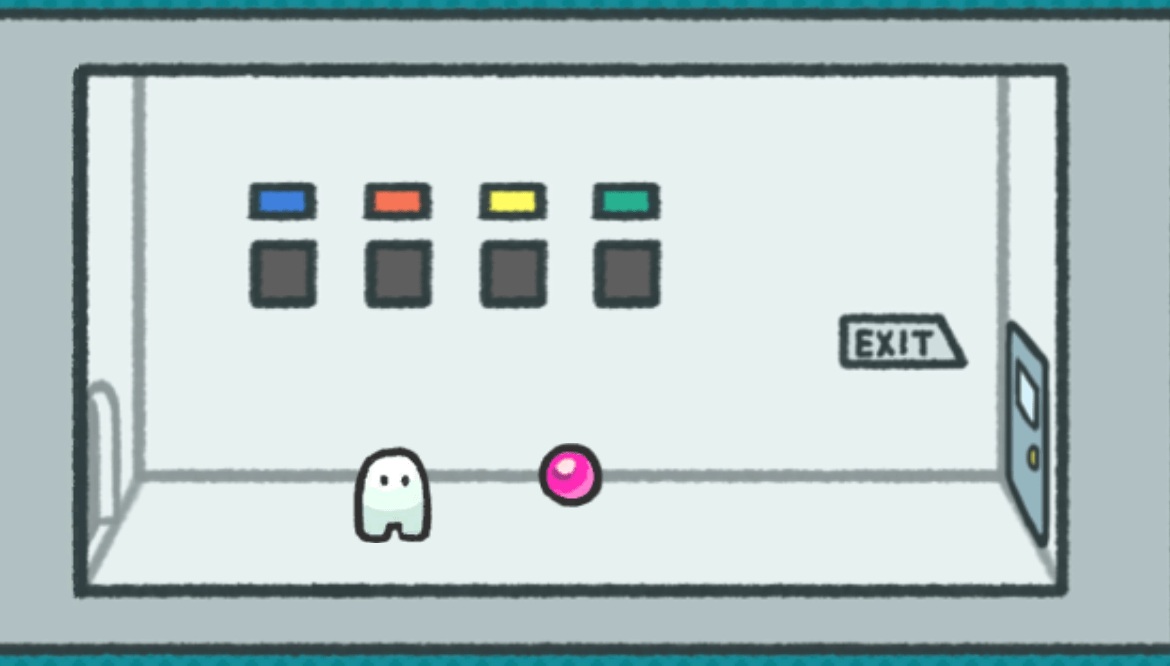
- For instance, I had completed an all-blue and an all-green row at this point in the game (below):
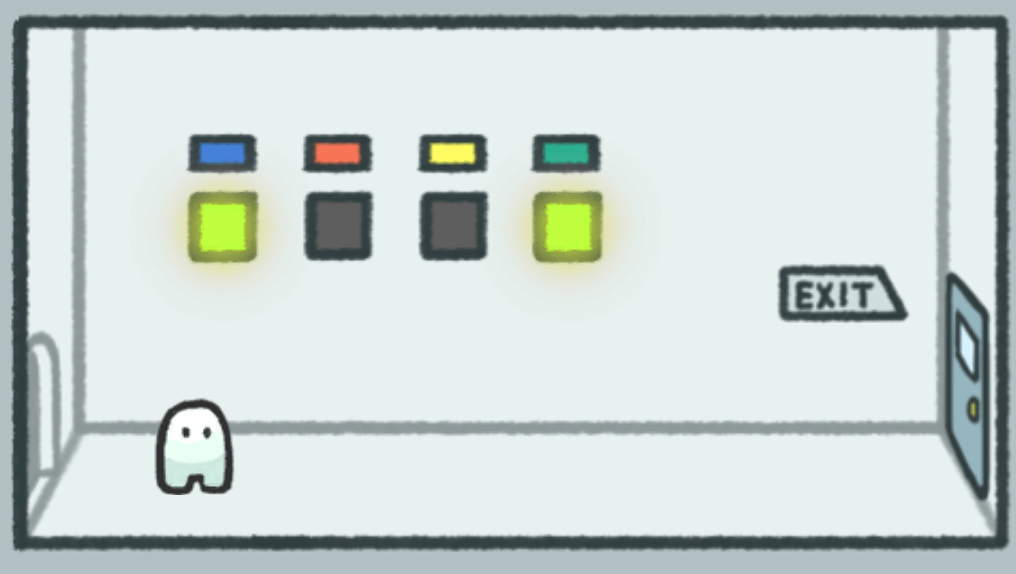
Resources & Boundaries:
- You need the keys to unlock each step of the puzzle. The main way to do this is by collecting items (sometimes hidden) in the different rooms, then taking them to the correct room to be applied. For example, I collected these pink balls and then had to take them to a different room to place one on the pillar.
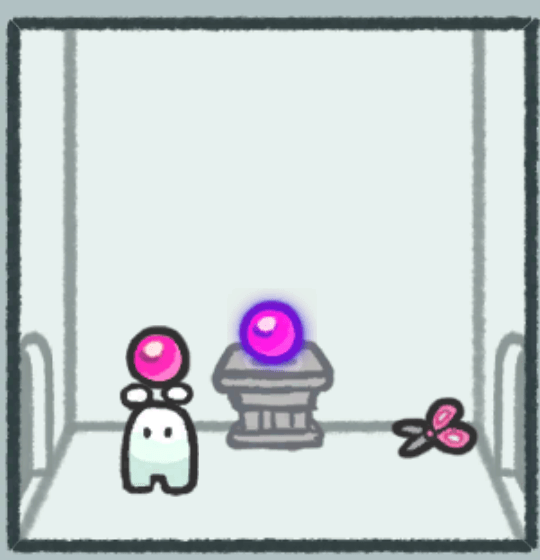
- It was helpful to see the ball glow purple instead of outline black to show that it was correctly placed. They continued to use this pattern in the game — in the picture below, the the gear, the weight, and the red blanket are all collectable items. However, only the weight is placed correctly/finally. The gear and the red blanket have yet to find their home, as indicated by the black outline.

- The “physical” containment of the building acts as a boundary of the game, since you can’t go past it.
Type of Fun
This escape-room-type game felt like challenge fun to me. There were moments in which I just wandered every room, pressing the space bar aimlessly because I had no idea how to move forward. I had to really look carefully at every item/person in every room to figure out where my next clue was.
Highs and Lows
I really enjoyed all of the “a-ha!” moments I got to by using close observation. Take this layout, for example:

Some observations and conclusions I came to from this layout: 1) I lined up 3 rooms that all had holes so that something could pass through them. (Notice in the featured image at the top that not all rooms have these holes.) I must now be able to press the button to hit the target. 2) The gear in the rightmost room is visually similar to the gears in the center room. This probably means I need to take the gear item to the red gear room.
As mentioned earlier, I also loved the visual cues of when I did something right, especially because it usually took lots of floundering to find the right move.
Embarrassingly, I spent about 12 minutes trying to line up the final red rooms. I know this isn’t a ton of time on its own, but it was a lot more than I spent trying to find the other colors. And I also know that it’s meant to be the hardest since it’s the last, but there were a couple times when I wanted to give up because I had no idea where to look and did the same search routine over and over again. Perhaps a cheeky hint system could be implemented? Just an idea (that I probably wouldn’t implement since I love how simple it is.)


